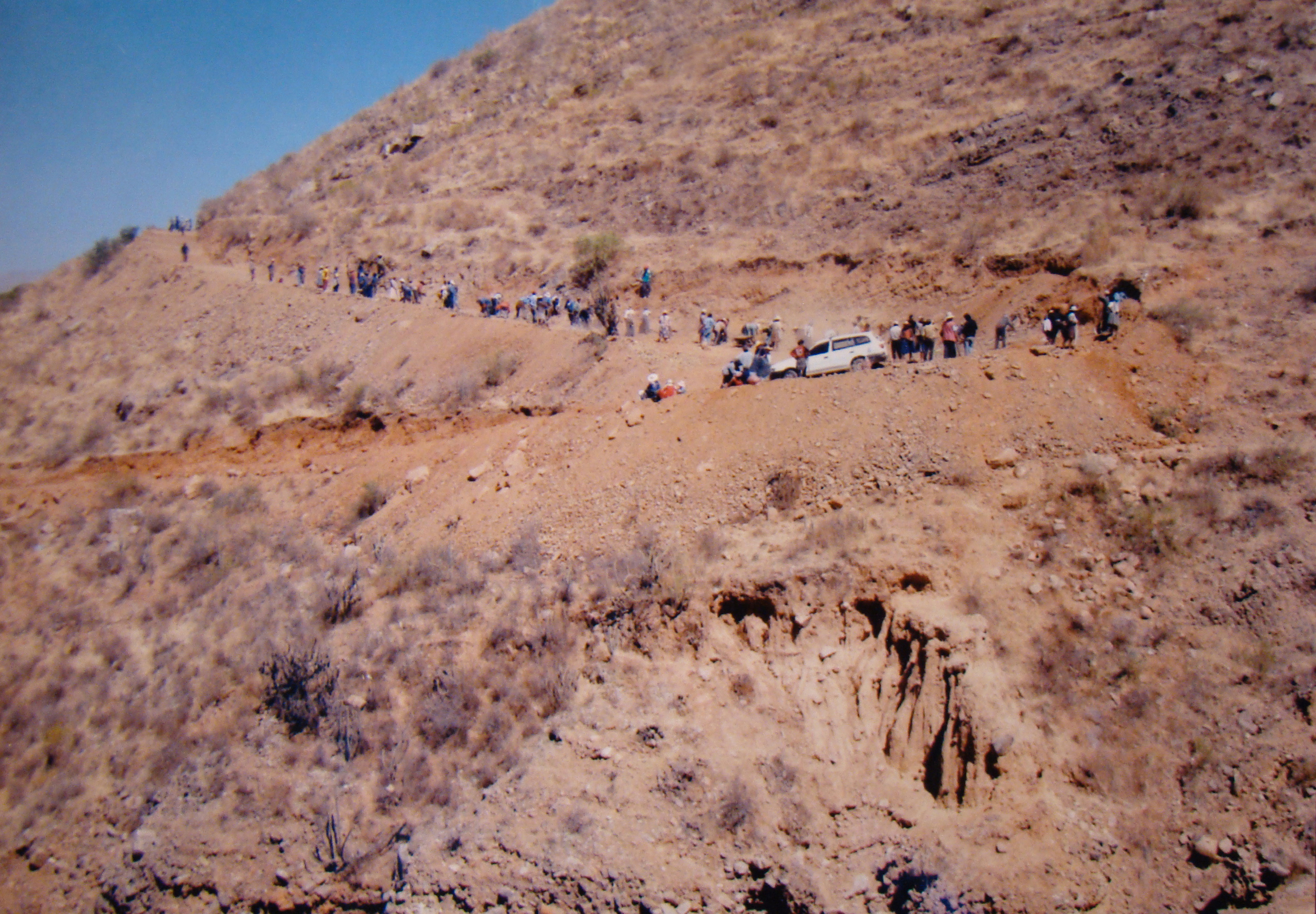Oscar Olivera and Tom Lewis, Cochabamba: Water War in Bolivia (Cambridge: South End Press, 2004), 7–8.
A legal loophole allowed these water systems to function without any permission from the state. However, autonomy is also a tradition in Bolivia. Since the creation of the republic, the state has been largely absent, especially in non-urban areas. This has made possible the creation of autonomous initiatives with practically no regulation. Since Evo Morales came to power, the state has initiated a process of expanding into areas previously left alone—not necessarily to provide services but to regulate and profit from them.
Bechtel’s 2001 income was $14.3 billion dollars, while Bolivia’s GDP that same year was $8.1 billion dollars. By the time the contract was signed, Aguas del Tunari was a consortium whose majority (50%) shareholder was International Water Holding B.V., a subsidiary of Bechtel. The Spanish multinational corporation Abengoa Servicios Urbanos held 25% of the shares, and four Bolivian companies held the remaining shares.
Jim Shultz, “Bolivia’s War over Water,” The Democracy Center (2003).
Until the 1980s, unions (mainly miners) were the primary mobilizing force in Bolivia. After DS21060 was implemented and the organized labor force was reduced, many people migrated to cities and unions lost their power. The so-called Marcha por la Vida (March for Life) in 1986 was the starting point of a series of defeats for the labor movement. Oscar Olivera, the author's brother and one of the main leaders of the Cochabamba Water War, recalls the march: “In September 1986, the miners' union organized their famous March for Life, which began in the high plateau and covered 200 kilometers on the way toward its goal—La Paz. The march involved thousand of miners, their families, and supporters of other sectors of society… But the military intervened to halt the march. Without a single shot being fired, the people demobilized. In reality, this was a kind of abdication. The miners gave in to the state and that is when a new era began in Bolivia.”
Olivera and Lewis, Cochabamba, 31–32.
Ibid., 34–35.
Ibid., 37–41.
The demand for a constituent assembly was born during the historic indigenous marches and found an echo in cities during the mobilizations in 2000 and 2003. When Morales assumed control of the government, it was with a mandate to make this possible.
Usos y costumbres is an indigenous customary law, which operates according to how a resource—in this case water—has been used and managed traditionally. It varies from one place to another and changes over time.
Resolution United Nations General Assembly, Resolution A/RES/64/292, July 2010, ➝.
Article 5 in Spanish reads: “Para efectos de la protección y tutela de sus derechos, la Madre Tierra adopta el carácter de sujeto colectivo de interés público,” or “For the purposes of the protection and guardianship of its rights, Mother Earth adopts the character of a collective subject of public interest,” ➝.
Alexander Dwinell and Marcela Olivera, “The water is ours damn it! Water commoning in Bolivia,” Community Development Journal 49, no. 1 (2014): 44–52; Álvaro García Linera, “El Estado en transición. Bloque de poder y punto de bifurcación,” in El Estado: Campo de Lucha (La Paz: CLASO, 2010).
Dwinell and Olivera, “The water is ours damn it!,” 50.
Carlos Crespo “Tipnis y Autonomia,” Bolpress (2012).
The Bolivian government adopted a new constitution in 2008 following a constitutional assembly.
These systems can be found all over the Americas and there are good examples of cooperation among them and public companies. See Madeleine Bélanger Dumontier, Susan Spronk, and Adrian Murray, The work of the ants: Labour and community reinventing public water in Colombia (Municipal Services Project, 2014), ➝; Daniel Viglietti, “Public and Community Partnership in the Americas,” Transnational Institute, January 28, 2015, ➝; and “All for one and one for all,” Transnational Institute, February 4, 2014, ➝.
Dwinell and Olivera, “The water is ours damn it!,” 46–47.
